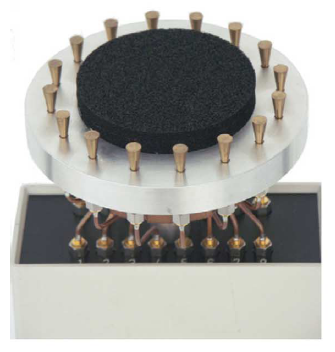TR2008-048
Outdoor-to-Indoor Office MIMO Measurements and Analysis at 5.2 GHz
-
- , "Outdoor-to-Indoor Office MIMO Measurements and Analysis at 5.2 GHz", IEEE Transactions on Vehicular Technology, Vol. 57, No. 3, pp. 1374-1386, May 2008.BibTeX TR2008-048 PDF
- @article{Wyne2008may,
- author = {Wyne, S. and Molisch, A.F. and Almers, P. and Eriksson, G. and Karedal, J. and Tufvesson, F.},
- title = {Outdoor-to-Indoor Office MIMO Measurements and Analysis at 5.2 GHz},
- journal = {IEEE Transactions on Vehicular Technology},
- year = 2008,
- volume = 57,
- number = 3,
- pages = {1374--1386},
- month = may,
- issn = {0018-9545},
- url = {https://www.merl.com/publications/TR2008-048}
- }
- , "Outdoor-to-Indoor Office MIMO Measurements and Analysis at 5.2 GHz", IEEE Transactions on Vehicular Technology, Vol. 57, No. 3, pp. 1374-1386, May 2008.
-
Research Area:

Abstract:
The outdoor-to-indoor wireless propagation channel is of interest for cellular and wireless local area network applications. This paper presents the measurement results and analysis based on our multiple-input-multiple-output (MIMO) measurement campaign, which is one of the first to characterize the outdoor-to-indoor channel. The measurements were performed at 5.2 GHz; the receiver was placed indoors at 53 different locations in an office building, and the transmitter was placed at three "base stations" positions on a nearby rooftop. We report on the root-mean-square (RMS) angular spread, building penetration, and other statistical parameters that characterize the channel. Our analysis is focused on three MIMO channel assumptions often used in stochastic models. 1) It is commonly assumed that the channel matrix can be represented as a sum of a line-of-sight (LOS) contribution and a zero-mean complex Gaussian distribution. Our investigation shows that this model does not adequately represent our measurement data. 2) It is often assumed that the Rician K-factor is equal to the power ratio of the LOS component and the other multipath components (MPCs). We show that this is not the case, and we highlight the difference between the Rician K-factor often associated with LOS channels and a similar power ratio for the estimated LOS MPC. 3) A widespread assumption is that the full correlation matrix of the channel can be decomposed into a Kronecker product of the correlation matrices at the transmit and receive array. Our investigations show that the direction-of-arrival (DOA) spectrum noticeably depends on the direction-of-departure (DOD); therefore, the Kronecker model is not applicable, and models with less-restrictive assumptions on the channel, e.g., the Weichselberger model or the full correlation model, should be used.
Related News & Events
-
NEWS IEEE Transactions on Vehicular Technology: publication by MERL researchers and others Date: May 15, 2008
Where: IEEE Transactions on Vehicular Technology
Research Area: CommunicationsBrief- The article "Outdoor-to-Indoor Office MIMO Measurements and Analysis at 5.2 GHz" by Wyne, S., Molisch, A.F., Almers, P., Eriksson, G., Karedal, J. and Tufvesson, F. was published in IEEE Transactions on Vehicular Technology.